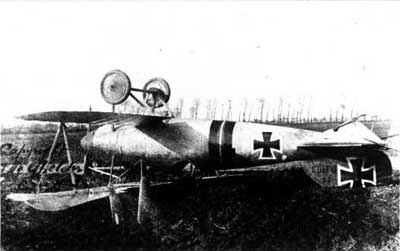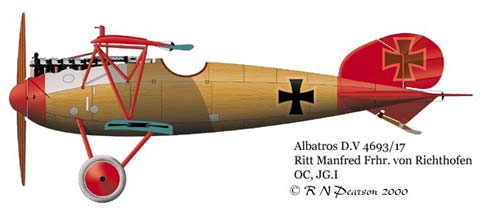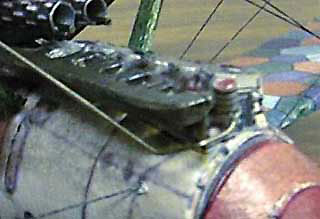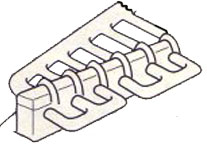
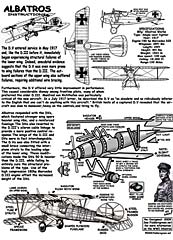

Albatros-DVa-Collection - $$15.95
The Albatros D.V was a fighter aircraft used by the Imperial German Air Service during the First World War. The D.Va was the final development of the Albatros D.I family, and one of the last Albatros fighters to see WWI operational service. This collection had 15 versions as of 7/09 thanks to the valiant efforts of Duane Reynolds
Albatros DVa German WWI Scout
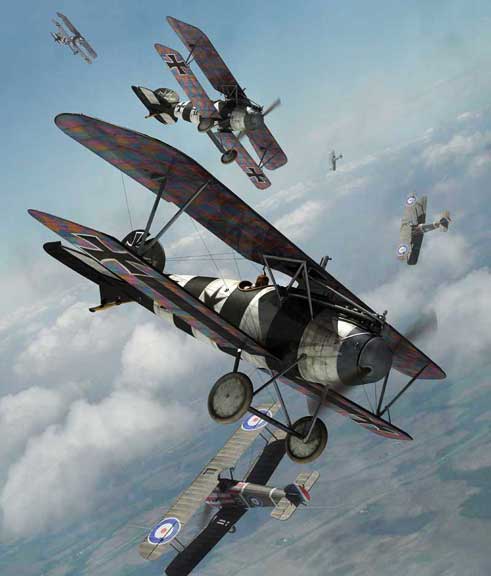
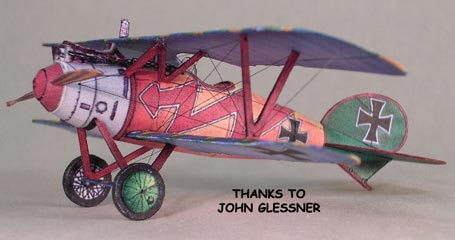
Just after its combat debut, one of the sleek new Albatros D.III fighters experienced a cracked wing spar, forcing the pilot to land in open country. Manfred von Richthofen, the 'Red Baron' himself, was lucky to avoid complete structural failure, unlike several other experienced German airmen. As a result of numerous wing failures, restrictions were put on the diving speed of the D.III, which was hardly satisfactory for a high-performance combat aircraft. The cause was the weakness of the V-strut supporting the lower wing, which permitted twisting under load. Another serious fault was that the radiator was located under the center of the top wing, where any battle damage would cause the pilot to be sprayed with boiling water. The radiator was moved to one side for this reason, but still presented some hazard.
Despite its structural problems, the D.III, the first of the Albatros 'V-strutters', was the best and most effective of all thc Albatros fighters produced during World War I. By the spring of 1917 all 37 Jagdstaffeln on the Western Front were equipped with it, either fully or partially, and it was responsible for inflicting severe losses on the Royal Flying Corps during the period that became known as 'Bloody April'. It reached its peak of service in November 1917, when 446 were deployed. By 1918 they had produced more variations of the D. family and our model is based of the D.Va.
I've attached some pics of your von Hipple Albatros for your review. I've added some additional engine detail, rigging, and actually re colored the lozenge pattern somewhat. This model is 1/72 scale and better than any WW1 plastic model of similar scale I've built. Thank you for keeping those card models coming ! ...John Glessner
German WWI Albatros DVa Scout Flying Circus Collection:
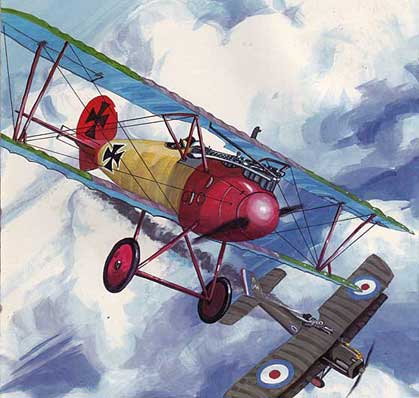 |
This was one of the first of the new streamlined fighters with a rounded fuselage molded from birch plywood. They made over 3000 by war's end in 1918. One of our DVa Albatros cardmodel displays the markings of German Lt. von Hipple |
This webpage is for the Albatros DVa Collection which has 14 different versions as of 7/09
Click HERE to get to the Albatros DVa single model offer
(the pages will be similar)
|
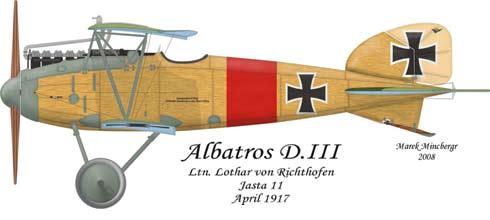 |
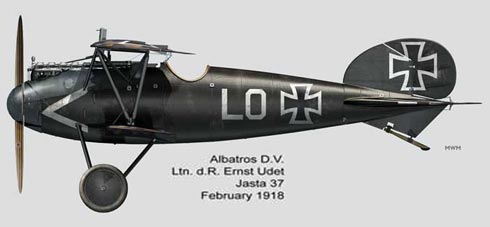 |
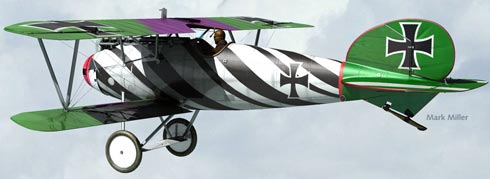 Versions as of 7/09: |
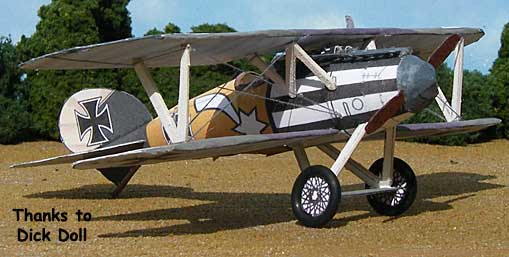
At the beginning of 1917, the war in the air was going firmly the Allies' way. Bristol Fighters, Nieuport Scouts and Airco D.H.2s were keeping the skies over the trenches clear for the numerous B.E.2s and R.E.8 reconnaissance aircraft that were so essential to the Allied ground forces. Suddenly the pendulum swung the other way. In six short weeks, beginning in April, Germany regained the upper hand. This was due in part to the success of the formation of German fighting units, the Jagdstaffeln. Each Staffel or Jasta usually consisted of 14 aircraft and was led by a pilot who had already shown outstanding skill and courage.
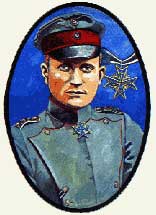 At this time, too, the Russians began to retreat, freeing more
men and equipment including aircraft for the Western Front. But
the biggest single influence on the German change in fortunes
was the introduction of a new aero plane: the Albatros DIII. The DIII was neither significantly faster nor more maneuverable
than its immediate predecessors, the D.I and DII. Its up rated
Mercedes six-cylinder in-line engine delivered just 10 extra hp.
So how did it gain its fearsome reputation that resulted in that
fateful period the Allies called Bloody April?
At this time, too, the Russians began to retreat, freeing more
men and equipment including aircraft for the Western Front. But
the biggest single influence on the German change in fortunes
was the introduction of a new aero plane: the Albatros DIII. The DIII was neither significantly faster nor more maneuverable
than its immediate predecessors, the D.I and DII. Its up rated
Mercedes six-cylinder in-line engine delivered just 10 extra hp.
So how did it gain its fearsome reputation that resulted in that
fateful period the Allies called Bloody April?
The statistics are unarguable. Between April 1 and May 5, 1917 well over 200 British and French aircraft were brought down, mostly by Albatros DIIIs, with negligible German losses. It is likely that the German pilots' new-found confidence stemmed in part from their new training and fighting methods, but also from one previously overlooked, but vital factor: improved visibility. The earlier Albatros fighters - or Albatri as they were occasionally called by the British - suffered from a distinct lack of forward and downward vision. To remedy this serious shortcoming, the Albatros chief designer, Robert Thelen, took a leaf out of a French exercise book: more precisely he studied the Nieuport Scout. The year before, several Scouts had been captured intact and had been sent for evaluation by the inspectors of the Imperial German Air Service.
Thelen set about making some important changes to the basic layout of his already beautiful fighting aircraft. He adopted a sesquiplane layout, where the lower wing is much smaller in width than the upper. As with the French Nieuports, the result was that the lower wing needed only a single main spar. This led to the adoption of the famous V struts which gave rise to the British pilots' nickname for the Albatros and the French Nieuport - 'V-strutter'.
The single spar arrangement seemed attractive. It saved a considerable amount of weight but it also brought problems, because, under certain conditions of stress, caused by violent maneuvers, the wing flexed and occasionally failed completely.
The famous Red Baron, Manfred von Richthofen, almost lost his life through exactly this problem. He managed to put his Albatros DIII down in one piece and for a time returned to the DII. (It is interesting to note that Richthofen's DII was, in fact, manufactured under licence by Halberstadt, famous for its two-seater reconnaissance aircraft.)
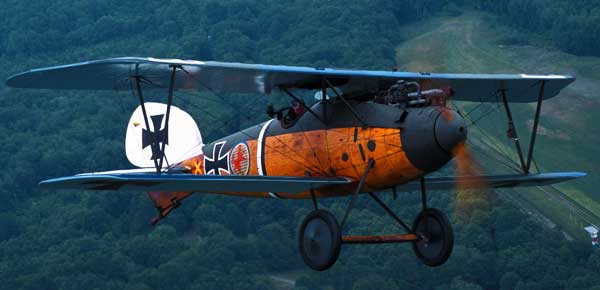
But by the beginning of April, the Baron had returned to the DIII. It is not known whether he believed the wing failure to be an isolated incident or whether he had worked out a way of flying the aircraft in combat that would not unduly stress the defective lower wings. The fact remains that Richthofen scored 21 victories against Allied aircraft during April alone.
All the Albatros fighters were noted for their beautiful streamlined fuselages. Thelen accomplished this by making them out of curved sheets of veneer, in a process known as semi-monocoque construction in which, as in a lobster claw, all the strength is in the skin.
One other design detail is worth recording. In order to preserve the Albatros' sleek lines, its Teeves und Braun radiator was mounted in the upper wing Centrex section, immediately in front of the pilot. This was very quickly moved to one side, after pilots were reported being badly scalded by boiling water pouring from a bullet-ridden radiator.
Von Richthofen was by now in command of the famous Jasta 11 following the death of his mentor and perhaps the greatest ace of them all, Oswald Boelcke, on October 28, 1916. Boelcke had crashed to his death following a mid-air collision with Erwin Boehme, one of the two lieutenants he had selected for future leadership. In an attempt to follow his leader down during a run-of-the-mill dogfight, Boehme's undercarriage caught Boelcke's upper wing tip, causing it to pull away from its struts.
The Albatros swung violently out of control. Boelcke fought all the way down and at one stage seemed to have regained some form of control. But at 470 ft observers saw the Albatros dive steeply into the ground. It could have been the end of an era. However, Boelcke's disciples had learned their lessons well, and Germany's air superiority continued for several more months.
The craving for a hero to worship, thrust Manfred von Richthofen firmly into the limelight. The Richthofen legend grew, and not just in his home country. All over the Western Front, Allied pilots could talk of little but an encounter with the Red Baron.
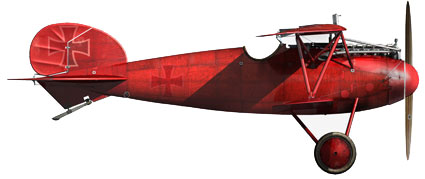 Flying an Albatros DII, Richthofen actually brought down another
victim on the morning of his leader's funeral, Sunday 3 November
1916. Von Richthofen took control of jasta 11 and began to fly
the Albatros DIII. Despite the wing flexing problem that nearly
cost him his life, Richthofen's scarlet DIII became the most feared
German aircraft over the Western Front.
Flying an Albatros DII, Richthofen actually brought down another
victim on the morning of his leader's funeral, Sunday 3 November
1916. Von Richthofen took control of jasta 11 and began to fly
the Albatros DIII. Despite the wing flexing problem that nearly
cost him his life, Richthofen's scarlet DIII became the most feared
German aircraft over the Western Front.
As had happened so often before in World War I, the balance of power began to change. This time it was the new Allied SE5s and Sopwith Camels that successfully challenged the DIII for number one position. By the end of 1917, the Albatros DIII was being replaced by the D.V. At that time nearly 1000 were in service over the Western Front, with further squadrons seeing duty in Mesopotamia.
The Albatros DIII, with its graceful semi-monocoque fuselage, was one of the most beautiful aircraft of the 1914-18 war. It was also among the most successful.
ALBATROS D-Va Details
The tremendous success of the Albatros Scouts in the early months of 1917 encouraged a feeling of complacency in the ldFlieg (Inspectorate of Flying Troops). it was felt that the Albatros Werke would continue to produce war winning fighters. By May 1917 such Allied types as thc Spad, Sopwith Pup and Tri plane and S.E.5, each able t out-fly the Albatros D-III, were appearing in number With some dismay it was then realized that the next, Albatros D-V was little better than its predecessor.
Wings, inter plane struts and tail were identical to those of the D -III, but the D-V's aileron cables passed through the top wing and had small shrouds, while the D-III's ran through the lower wing and thence up to crank levers on the top wing. The prototype's rudder had a straight trailing-edge, but later machines had trailing edges of rounded outline. The lower fin was taken back to the horizontal knife-edge of the fuselage-the D-III's lower fin terminated below the rudder hinge line. In contrast to the flat-sided D-II fuselage. that of the D-V was oval in cross-section and deeper, so that there was a smaller gap between it and the top plane. A faired head-rest was fitted behind the cockpit, but it was frequently taken off. The undercarriage was of the steel tube type with a fairing over the axle, which provided extra lift. Twin synchronized guns were mounted.
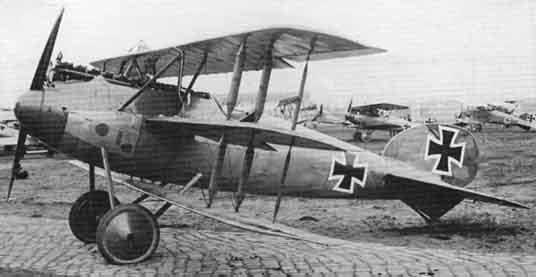 |
The radiator was set in the top wing to starboard of the center-line:
machines operating in Palestine had two radiators. |
The Jagdstaffeln received the D-V in May 1917; the D-Va was supplied in the following month. From the beginning fatal crashes, caused by wing failure, occurred, and extra bracing wires were added to remedy wing flutter. In order to prevent the twisting of the single spar of the lower wing under stress, small struts were taken from the leading edge to the lower part of the inter plane struts. Finally, the factory fitted a metal box-like sleeve to the center section of the lower wing: the sleeve enclosed the main spar anA strengthened it. The aircraft parks were ordered to modify those machines already issued, but subsequently an Albatros official visiting the front discovered that this work had not been done, and that wing failures were still occurring even after these alterations, pilots were advised not to dive too steeply, which hardly raised their morale.
The Albatros D.V was produced in a not entirely successful attempt to maintain the superiority gained in 1917 by the excellent D.III, in the face of later Allied types such as the SESA and Sopwith Camel. An interim model, the D.IV, appeared in 1917, marking a return to the equal-chord wings of the D.II and powered by a fully enclosed geared Mercedes engine. Owing to troubles with this engine the D.IV was not developed, but its fuselage design was retained in the D.V, which resumed the more graceful and more efficient wing form of the DIII.
The D.V's fuselage was of oval section (compared with the flat-sided D.III), and a high-compression Mercedes D.IIIa was installed with fewer pretensions to careful cowling to simplify access and maintenance. The D.V had the same Triplane as the D.III, but introduced an integral fixed fin, a raked-back under fin and a more rounded rudder. Fuselage construction was lighter but stronger than that of the earlier Albatros fighters, although the D.Va's gross weight was slightly increased over that of the D.V by additional strengthening. The D.V also differed from the other Albatros fighters in the arrangement of its aileron control wires; this was the only visible distinction between the D.V and D. Va.
Unfortunately, although flying qualities remained good, the D.V and D.Va were not a great improvement over the D.III, achieving their success as much by their numbers as by performance. The D. I from mid-1916, then the DII, and the DIII from early 1917 had wrested back air superiority from the French and British; the first D.Vs were delivered to Jasta's in June 1917, the D.Vs following from late autumn, both versions serving alongside the earlier D.IIls. They reached their peak of service in November 1917 and March 1918 respectively, and were the most widely used of all Albatros fighters.
Exact production figures are not known, but a minimum of 1,512 D.V/Vas are known to have served with Western Front units, and this takes no account of aircraft with home establishments or those used in Italy and Palestine. Production was shared by the Ostdeutsch. Albatros Werke. Despite limitations on diving maneuvering imposed after a series of crashes caused by failure of the single-spar lower wings (also a weakness of the D.IV, D.V/Va's remained in service until the Armistice. Postwar, the redesignation of Albatros types the D.V/Va became known as the L24.
FLYPAPER sends in these photos of a highly detailed engine and says: " I didn't mean for this one to get as detailed as it did. You know that pump up cylinder in the cockpit (for maintaining gasoline pressure maybe?), well, it's in there. One more experiment. One day it will be the "ultimate." Then I'll quit. Hah!! Like that's gonna happen. |
The radiator was set in the top wing to starboard of the center-line: machines operating in Palestine had two radiators. |
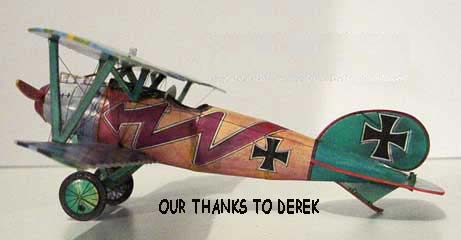
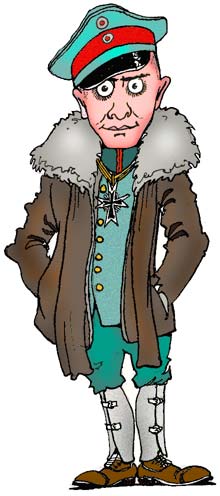
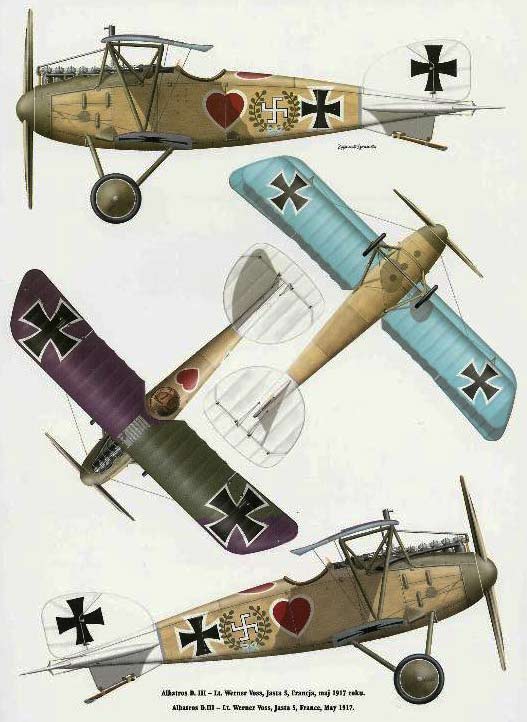
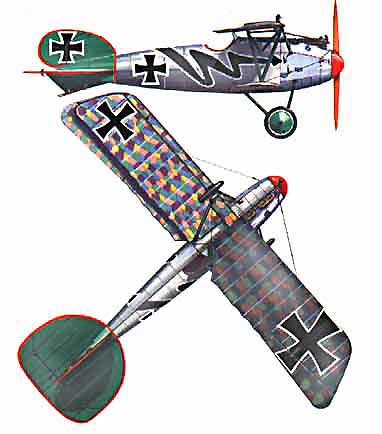 |
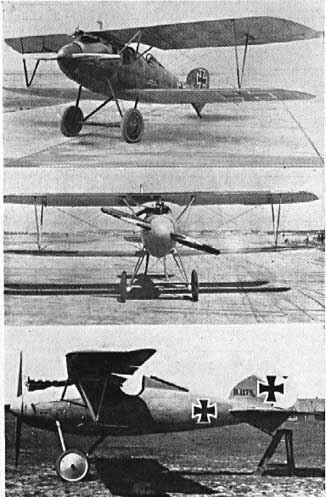
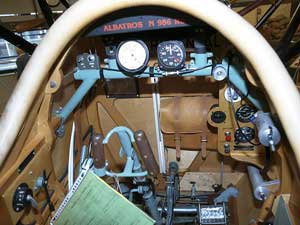 |
Cockpit of a replica Albatros DVa. |
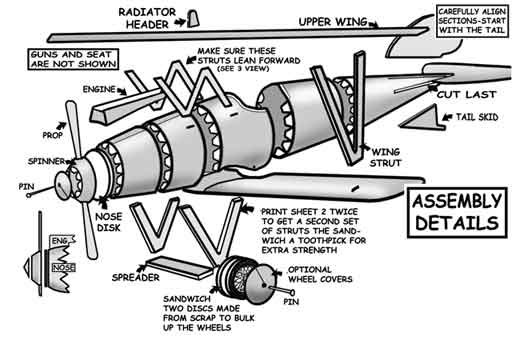
Albatros DVa Specifications
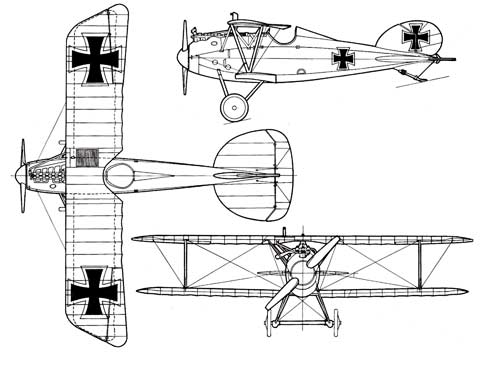 |
Length: 24 ft 1 in Wingspan: 29 ft 8 in Height: 8 ft 10 in Wing area: 228.5 ft² Empty weight: 1,515 lb Loaded weight: 2,066 lb Powerplant: 1× Mercedes D.IIIaü 6-cylinder water- cooled inline engine, 180 hp Performance Maximum speed: 116 mph at sea level Service ceiling: 9,840 ft Time to climb: 4.35 min to 3,600 ft Endurance: 2 hours Armament 2 × forward-firing 7.92 mm (.312 in) LMG 08/15 machine guns |
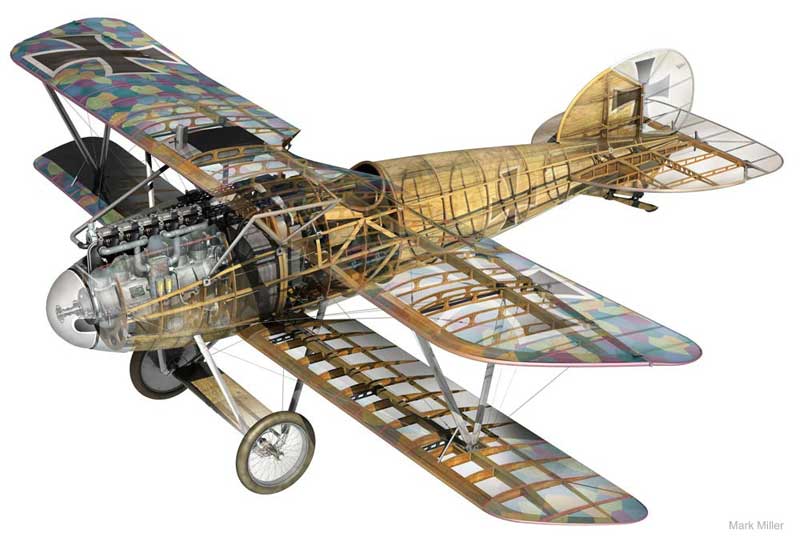
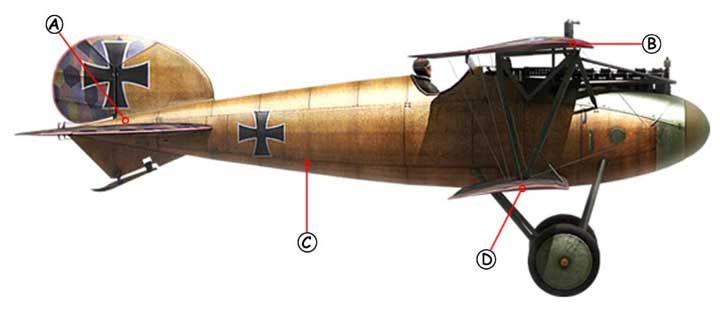 |
|||
| A: The later D.V married the D.III s wing and tailplane to a new fuselage and fin. Of course this just transferred the structural problems to the new type. | B: The radiator for the water-cooled engine was inset into the upper wing. It was well sited to avoid battle damage, but if it occurred the pilot risked a scalding. | C: The D.III was gradually outclassed by the Sopwith Triplane, and later by the Spad VII and the Sopwith Camel. | D: The D.III was a sesquiplane, with a lower wing of the same span as the top one, but half the chord. The two wings were joined by 'V'- shaped struts. |
